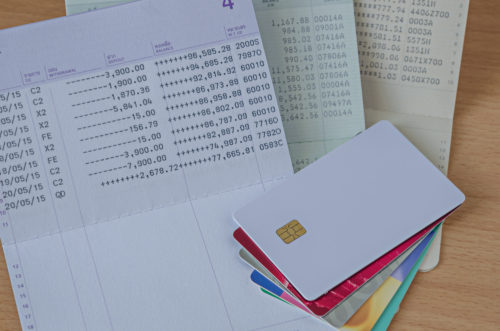Whether you’re thinking about applying for a credit card or you just got approved for one, it’s important to understand what you can expect to find on your credit card statement. Credit card statements are sent to customers so they can review the transactions they participated in, how these transactions affected their current balance, and the payment that’s due. You may also opt to receive your credit card statements electronically.
These statements are important because they allow you to look over activity on your card from the past month so you can identify any potentially fraudulent transactions and dispute them. The credit card statement also tells you when to pay your bill and provides you with information on any rewards you’ve earned if your credit card is also associated with a rewards program. It’s essential to comprehend all the components you’ll find on your credit card statement.
Table of Contents
Credit Card Statement Sections
When you receive your credit card statement, you’ll see that it provides you with several pieces of information that are split into sections.
Payment Information
The payment information section on your statement is generally the most important because it shows you the current balance you have on the card. This section also includes the minimum payment that’s due, which is the lowest payment you can make to the credit card company without incurring penalty fees.
Keep in mind, if you don’t pay off the entire balance of the card, the remaining balance may be subject to interest fees that vary depending on your credit card terms. In the payment information section, you’ll also see information on the late payment fee you will incur if the company doesn’t receive your payment in time.
Some credit card companies also include a calculation of the length of time it would take you to pay off your balance if you continuously made minimum monthly payments. This calculation also includes the total interest you would pay if you continued making minimum monthly payments until the balance was zero. Sometimes referred to as a “minimum payment warning,” this calculation is meant to motivate you to attempt to pay off your balance or at least make payments that are higher than the minimum.
Account Summary
Your account summary shows how your current balance was calculated. Some pending transactions from your previous statement may not have been completed until your current statement was processed.
This causes transactions that you may have charged in the previous month to show up on your current statement. Additionally, pending charges that you recently conducted may not show up on this current statement but will be included in your next statement.
This section shows the interest charges or other fees associated with your current statement. These fees are also used to calculate the current balance. Your account summary provides information on your credit limit, the credit you still have remaining, and your cash advance limit, if available.
Rewards
If your credit card has a rewards program, your credit card statement will include information on the rewards you’ve earned throughout the statement period. Certain types of purchases may earn higher rewards than others so the statement will break down the amount of rewards each transaction contributed. This section will conclude with your current rewards points balance.
Account Information
The account information section on your statement should be the same every month. It includes legal disclosures and details on how your totals are calculated. This section may also provide information on your credit card terms and how you can contact the company to dispute potential errors you find on your statement.
Payments
On your credit card statement, you’ll see the payments you’ve made toward the balance of your card. If you received any refunds or credits on your credit card, they’ll also appear as payments that were applied to your balance. These payments and credits are already taken into consideration when your total balance is calculated on the statement.
New Charges
In most cases, the new charges section of your credit card statement is the longest portion of the document. It lists all the transactions you completed within the statement period. Each transaction should provide you with the:
- Name of the merchant.
- Date of the transaction.
- Total amount spent.
Some credit card statements also categorize your purchases by the types of transactions they fall under. For example, if you bought groceries at the supermarket, these purchases are grouped in the “Groceries” category.
Interest
The interest charges section of your credit card statement shows the interest you’ve paid year-to-date. This section also breaks down the interest charges you’ll incur for the statement period. In most cases, the interest charges section also breaks down specific interest rates as they apply to cash advances, balance transfers, or regular purchases.
Importance of a Credit Card Statement
Your credit card statement provides you with a wealth of information about your account and balance. It’s important to understand how to efficiently read the statement so you know how much you need to pay and when your payment is due.
By reviewing the sections on your credit card statement, you can avoid late payment penalties and ensure you know how much interest you could pay if you continue making minimum payments each month.
Reviewing your credit card statement every month is crucial so you can make sure there aren’t any errors or fraudulent charges on your account. When you’re familiar with the different sections included in your credit card statement, you’re able to use this important information to understand your account details.
Image Source: https://depositphotos.com/





